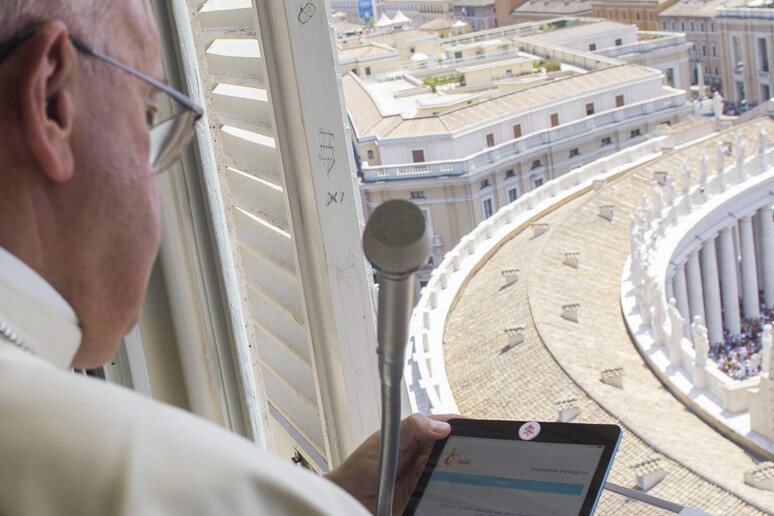L'Osservatore Romano has
published a special piece on recent popes' growing use of
information technology.
The Vatican daily noted that John Paul II on November 19,
2001 started the trend by sending European episcopates the
Post-Synodal Apostolic Exhortation Ecclesia in Oceania via email
from a laptop computer.
More recently Pope Francis signed up as 'pilgrim' for
World Youth Day 2016 in Krakow on a tablet computer from the
window of his study overlooking St Peter's Square, on Sunday.
Prior to Pope John Paul's email, the Holy See's website
www.vatican.va was set up, on March 24, 1997, and soon
thereafter was receiving millions of hits every day.
''Many things have changed since then in the 'new media'
field,'' the Holy See's newspaper noted, ''and one of the most
evident is the eruption onto the scene of social networks, made
possible especially due to the substitution of personal computer
keyboards with light-weight, easy-to-use digital devices such as
smartphones and tablets.
''It is a way to communicate with the young, to get closer
to 'digital natives' despite the age difference,'' it said,
noting that the current pope had explained this concept on his
flight back from a trip to Latin America.
To a question on what he thought of 'selfies', he said that
''it's a different culture. I feel like a great-grandfather!
Yes, it is another culture, but I respect it.''
Pope Francis never pulls away from a request to pose for a
photo taken on fans' telephones.
In showing himself at his window while typing on an
''electronic device'', as he called it, the current pope has
shown once again an image of himself as communicator.
The tablet computer is similar to one received as a gift
three days after his election, on March 16, 2013.
''The choice to surround himself with two youths is
somewhat reminiscent of the domestic image of grandfathers of
the third millennium, who ask their grandchildren for advice
when they need to use computers and phones,'' the daily said.
Benedict XVI was the first to use a tablet computer, when
on December 12, 2012 - also flanked by two young people - he
tweeted for the first time from the @Pontifex Twitter account,
which has now surpassed 22 million followers.
ALL RIGHTS RESERVED © Copyright ANSA











